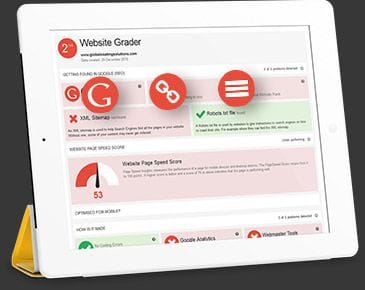Understanding Search Intent and SEO
)
Are you familiar with the Zero Moment of Truth?
Google coined the term in 2011, referencing the change in consumer behaviour online. It's that elusive moment in the buyer's journey between the stimulus that made you aware of a product and the First Moment of Truth. It's when a buyer recalls a brand just before they're about to hit that 'Add to Cart' button.
What does this have to do SEO? Well, everything. Understanding what type of content you need throughout the buyer's journey is crucial but having it found at the correct time in the cycle is just as important.
This is where search intent comes in.
What is search intent?
Similar to Rich Paul's relationship with LeBron James, search intent is the backbone of successful SEO campaigns. A web user's search intent typically falls under three categories:
- Informational searches
- Transactional searches
- Navigational searches
Let's explore.
Informational Searches
As the name suggests, these search queries are conducted by users who want to learn more about a certain subject. Don't expect these searches to yield high, or any, conversions they're still researching whether the health benefits of going with the soup or salad.
Examples of informational searches could be:
- How can I open this can without a can opener?
- Nike Air Force 1 sizes
- Canadian holidays 2019
Despite the low conversion rates of informational keywords, they're vital to the buyer's journey and SEO strategy. Most people won't make a purchase without conducting some level of research. The more information, and by extension, credibility, you provide, the better chance you'll have of your brand being top of mind when the Zero Moment of Truth hits.
Transactional Searches
Simply put, these search queries all pertain to completing a purchase. Examples could be:
- Buy can openers online
- Nike Air Force 1 men's size 9.5 white
- Wal-Mart men's underwear sale
Optimizing your site for transactional keywords is arguably the most important. These are the motivated users that are ready to purchase, and you want your digital store shelves front and center when they pull out the credit card.
Navigational Searches
While important to take note of, navigational keywords can't be optimized for. Navigational searches are more or less branded searches, where the user knows the exact site they're looking for. Examples can include:
- Nike.com
- Yourwebsite.com
Know, Do, Go
Google uses search intent of keywords to deliver the organic results it thinks you're looking for. Google breaks it down informational, transactional, and navigational searches into know, do, and go, respectively.
So when you're conducting your SEO research for your site, be sure to have a good diversity of keywords across all three categories. Ensure your content aligns with the user's search intent, otherwise your bounce rate will suffer, and by extension, your website's organic rankings. Use a tool like Moz's SERP analysis to see what types of content are coming up for the keyword you want to rank for, so you understand the general search intent of users inputting that search query.
Got a great product or service, but no one knows you exist? Bloomtools' SEO services can help your website rank on Google's first page, and above your competitor's. Get in touch for a free consultation.
) Author:Boaz Willinger
Author:Boaz Willinger| Tags:Search Engine Optimization |




)
)
)
